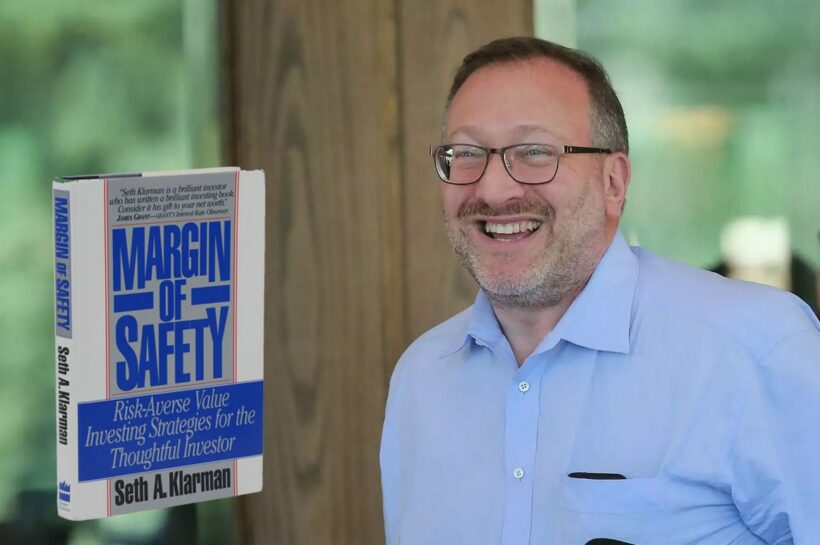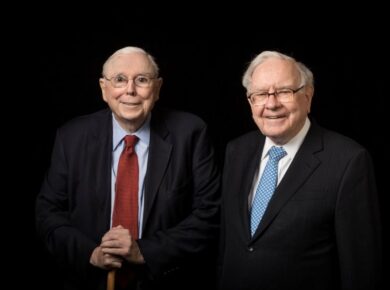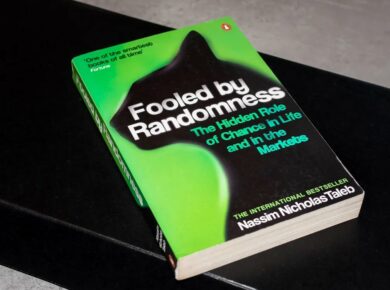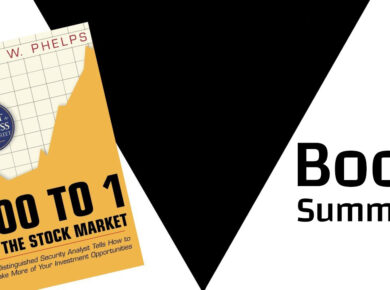After reading this post you will get to know more about Seth Klarman and take good advantage from the summary of his book: Margin of Safety.
Seth Klarman is a legendary value investor with some $25B in assets under management at his Baupost Group.
Seth Klarman is a highly respected American investor and the founder of The Baupost Group, a Boston-based hedge fund. Born on May 21, 1957, Klarman is known for his conservative value investing approach, often described as a “deep-value” or “contrarian” strategy. His investment philosophy is heavily influenced by the teachings of Benjamin Graham and Warren Buffett.
Some key points about Seth Klarman:
- The Baupost Group: Klarman founded The Baupost Group in 1982 with the help of initial investments from friends and family. The firm has since grown to become one of the largest hedge funds in the United States. Baupost is known for its disciplined, long-term investment approach and its ability to find value in distressed or overlooked assets.
- Value Investing: Seth Klarman is considered one of the foremost practitioners of value investing. He seeks to identify undervalued or misunderstood securities, which he believes will eventually be recognized and appreciate in value. This approach often involves investing in assets that others are selling or avoiding.
- Margin of Safety: Klarman is famous for emphasizing the concept of “margin of safety” in investing. He believes in buying assets at a significant discount to their intrinsic value, which provides a cushion against potential losses and reduces risk.
- Low Profile: Unlike some prominent investors who frequently appear in the media, Seth Klarman maintains a relatively low public profile. He is known for his reluctance to give interviews or share detailed information about his investment strategies. As a result, he is sometimes referred to as a “secretive” investor.
- Author: Klarman is the author of a highly regarded investment book titled “Margin of Safety: Risk-Averse Value Investing Strategies for the Thoughtful Investor.” The book, published in 1991, has become a sought-after and valuable resource among value investors.
- Philanthropy: Seth Klarman and his wife, Beth Klarman, are known for their philanthropic efforts. They have made significant donations to various causes, including education, healthcare, and research. Klarman is also involved in various charitable organizations.
- Investment Success: Over the years, Seth Klarman has consistently delivered strong returns for Baupost investors. His track record and reputation in the investment community have earned him a dedicated following among value-oriented investors.
Due to his low public profile, there may be limited accessible information regarding Seth Klarman’s recent investment activities or strategies, unlike more widely recognized investors.
The book: Margin of Safety – Risk Averse Value Investing Strategies for the Thoughtful Investor
In 1991 he released a book called “Margin of Safety – Risk Averse Value Investing Strategies for the Thoughtful Investor” which has become something of a must-read among sophisticated investors.
Unfortunately, it is out of print, and a physical copy cost hunderds of $ to get from Amazon.
One can only speculate of why Mr. Klarman decided not to make a second edition, there’s clearly demand for it these days.
- Is it because he’s already wealthy enough so he just doesn’t care?
- Is it because he offended some group of people that doesn’t like being offended?
- Or is it because he thought that maybe he revealed a little too much of his investing secrets?
Top 5 takeaways (summary) from the book Margin of Safety from Seth Klarman:
Takeaway 1: What’s the Difference Between a Value Investor & a Speculator?
Seth Klarman is clearly influence by Warren Buffett and Benjamin Graham, he even choose to name his book from Graham’s concept – the margin of safety.
As such, he is a value investor down to the core.
What does it mean to be a value investor according to Klarman? Klarman seems to divide investors into two camps. Value investors and speculators.
Not unlike what Buffett does, by the way.
His right-hand man Charlie Munger may have said it best:
“I don’t think that value investing will ever go out of style. Who in the hell doesn’t want value when you buy something? How can there be anything else that makes any sense except value investing?”
What’s the most important difference between these two groups according to Klarman?
- Value investors focus on business cash flows, while speculators focus on the value in the resell market.
- Value investors buy securities when they seem to offer good returns for the risk incurred, and sell when this no longer holds true.
- Speculators, on the other hand, only buy or sell when they think that the price of securities will rise or fall. Their ideas about future price movements are based on what they think that others will be doing.
Why is it so stupid to make judgement calls based on price alone? Because it is never clear which future events that are already priced in at today’s levels.
Therefore, value investors always compare price to underlying business value.
Art, antiques, rare coins, pokemon cards, cryptocurrency, these things are not investments but pure speculation, simply because they do not produce anything valuable to other people and so they do not produce any cash.
The only time they may throw off cash is when you sell them.
And the problem is that the buyer must also think that he’ll eventually be able to sell the asset to someone else at an even higher price, otherwise he wouldn’t want to buy, right?
Machines makes products and outcomes that people want, buildings pay rent, subscription software creates reoccurring revenues, loans issued pay interest – these are the things for value investors.
If these cash flows can be purchased at a reasonable price relative to their potential of growing in the future, and most importantly, the risk that they might disappear in the future, Seth Klarman is an interested buyer.
Takeaway 2: Investment Risk – A Terribly Misunderstood Concept
You’ve probably heard that first rule of investing (Warren Buffett) is to never lose money, and that his second rule is to never forget rule number one.
This does not mean that you should never have a down year in the stock market, trying to guard yourself against that is impossible.
It does mean that, over several years, you should invest in a way that ensures that you’ll never experience any material losses.
Value investors like Klarman & Buffett are incredibly focused on this downside – on investment risk. Why are they so obsessed with it?
Because, in investing, simply put, if you can remove the downside, the upside will take care of itself.
Risk for a value investor boils down to two things
- The nature of the asset that you are purchasing, which determines the degree of cashflow certainty,
- The price that you are paying for it.
The cash flows from a company with a long history in a slow-changing industry, like McDonald’s for example, are very low risk.
So, McDonald’s fulfils our first criteria for a low-risk investment.
However, it does sell at a P/E of 32 or EV/EBIT of 25 currently, and that’s not exactly cheap.
You can still lose money if that P/E multiple were to go down to, maybe 18. it’s always a two-part equation.
Investment risk is a terribly misunderstood concept.
Seth Klarman in his book Margin of Safety, takes a major stab at professors teaching finance who think that Beta, or price volatility, is the main determinant of investment risk.
This misconception has spread like a plague, even to some professionals on Wall Street.
Beta is a terrible measurement of risk because it fails to take the nature of the asset AND its price into account.
Perhaps the worst manifestation of all this nonsense, is the Capital Asset Pricing Model, or CAPM.
CAPM states that greater returns will be achieved by those who are willing to accept greater risks. They got it completely backwards.
To the contrary, risk erodes returns by causing losses.
For instance, small cap stocks are often said to yield higher returns than large caps because they are riskier.
But if a higher return is a given, are they really that risky?
Price volatility isn’t a good predictor of future performance, heck, it’s not even that good of a predictor of future volatility.
Seth Klarman
Takeaway 3: Three Methods of Valuing a Stock
A value investor does not wake up in the morning knowing his buy and sell orders for sure. buying and selling investments will always be determined depending on the relationship between value and price.
Price is easy to see but how do you determine the value-side of this equation?
Seth Klarman in his book Margin of Safety has three different methods that he suggests:
- Liquidation or Breakup Value
- Stock Market Value
- Discounted Cashflow Analysis [DCF]
Continue reading for more explanation.
Liquidation or Breakup Value
A simple way of valuing a company is to look at its balance sheet and see what the value of all its assets are.
If you sum up all the assets and deduct all the liabilities, you’d get a theoretical value if the company was to liquidate.
Most profitable businesses isn’t interested in shutting down though, and most of their value does not come from the balance sheet, but rather from their income and cashflow statements.
However, liquidation value can still represent some sort of “floor” or “cushion”, especially if these assets consist of tangible, liquid stuff, like cash or marketable securities.
Sometimes, even a profitable business sells for less than the net value of such assets, and that could be an interesting investment opportunity.
Stock Market Value
Another simple way of valuing a company is by looking at its earnings and cashflow and see how they trade in relation to other similar securities in the market.
For example, if semiconductor manufacturer A is valued at P/E 20 while the industry average is P/E 30, you might argue that A has a 50% upside, just in multiple expansion.
Seth Klarman thinks one must be very careful with this approach, though.
The market could be wrong on a whole industry, just like it could be wrong on a single company.
However, in something like a spinoff situation, when a company is going to list one of its subsidiaries, this approach is the most appropriate one.
Discounted Cashflow Analysis [DCF]
If you sum up the cashflows of an investment from today until judgment day, and you use a proper discount rate, you’ll get its theoretical value.
This approach works best for a business with strong prospects.
You must be able to say something about its future with some degree of certainty, because the calculations are very sensitive to assumptions about growth rates etc.
The method is theoretically correct for any type of investment, but one must be careful as there’s a high risk for “garbage in, garbage out”.
At times, a combination of different valuation methods gives the best result, especially with widely diversified businesses such as Warren Buffett’s Berkshire Hathaway.
However you chose to use them, the main point is this:
Any time you come up with a value which is quite a bit higher than the security’s current price, you’ve got a margin of safety.
When investing, you must insist on a margin of safety.
Why?
Consider this: A real estate agent cannot appraise the value of your home to the nearest $10,000.
Therefore, it isn’t reasonable to expect something more complicated, like business valuation, to be a very precise science either.
Takeaway 4: To Hold, or Not to Hold Cash
Opportunity costs is one of the most important concepts in investing.
If you put your money in stock A you cannot allocate those resources to stock B.
In fact, you cannot allocate the money to stock C, D, E, F, G or H either,
and that’s really tough when B, C, D, E, F, G or H overperformed your own choice, which was A.
Seth Klarman in his book Margin of Safety, discusses another dimension of opportunity cost of investing.
Have you ever sat through a huge market dip, wishing that you had some cash on hand? Many people sure have, and that represents an opportunity cost too.
By being fully invested all the time, you forego the opportunity of investing a ton of cash at a market bottom.
The choice of being fully invested or partly in cash is complex, and Klarman’s advice on this matter is really refreshing, because there is a middle-road.
Imagine that you’ve found a company with a 10% dividend yield. You buy it and then the market crash by 50%.
You think: “Damn, I should have stayed in cash!”
But then you remember, you still have your dividend!
Within a year, you’ll get 10% of your original investment back in dividends, which could be reinvested in the cheap market. Not so bad, after all.
A high dividend company isn’t even the best in class, by the way.
You read about valuing a company based on the liquidation of assets earlier. Such companies can throw off tons of cash at just the right moment if a market turn is around the corner.
The same goes for something like a merger arbitrage opportunity, you’ll get your invested capital back really soon and you are ready to redeploy it at that point.
This is the general idea:
- If you think that the market is in for a crash, it’s oftentimes a bad idea to act on it by sitting in cash.
More often than not, you’ll be getting out of the market while all your friends stay and get rich.
Money itself isn’t lost or made, it’s simply, transferred – from one perception to another.
What you can do instead is chose to invest in situations where lots of your invested cash should be returned in the near future by investing in, for example, high dividend payers, liquidations or merger arbitrages.
That way, you are not sitting on the sidelines, and you’ll be ready with cash if that collapse that you are expecting really is coming.
Takeaway 5: Apply the 80/20 Approach
Do you know someone who would gladly wait half a day outside of Walmart on Black Friday, just to get a $100 discount on their TV? Perhaps the same person who does weeks of research before buying something like a new washing machine.
But then, when it comes to his $10,000 investment in TSMC, that decision was made on a whim.
I hope it is obvious that you don’t want to be this person.
However, you also don’t want to be the person who spends weeks researching a single stock just to miss the opportunity.
Seth Klarman suggests something of an 80/20 approach towards investing in the stock market.
It’s better to spend most of your time shuffling through many opportunities than to go really deep on any of them.
Seth Klarman believes the really great ideas don’t require that much of research anyways, they should be what some call “a screaming buy”.
They got that margin of safety and it is quite obvious if you just spotted them at the right moment.
You’ll have to turn many stones, but don’t think that those opportunities that you shut down is wasted time!
One of the wonderful benefits with investing is that all knowledge is cumulative. Yesterday’s insights could be useful sooner than you think. so Focus on cashflows rather than resell price.
- Investment risk is a combination of cashflow certainty and price
- You can value a stock by using either the liquidation, market value or DCF method
- If you find the market expensive, make sure that cashflows arrive earlier.
And, a lot of your time as an investor should be spent shuffling through many ideas.
Final words
Seth Klarman’s “Margin of Safety: Risk-Averse Value Investing Strategies for the Thoughtful Investor” is known for its insightful and thought-provoking quotes.
Here are five of the most famous quotes from the book:
“Most investors are primarily oriented toward return, how much they can make, rather than risk, how much they can lose.”
This quote highlights Klarman’s emphasis on the importance of risk management and the need to prioritize the preservation of capital.
“The single greatest edge an investor can have is a long-term orientation.”
Klarman underscores the value of patience and a focus on the long-term horizon in investing, which can help investors withstand market volatility.
“Value investing is the discipline of buying securities at a significant discount from their current underlying values and holding them until more of their value is realized.”
Klarman’s definition of value investing emphasizes the fundamental principle of buying assets below their intrinsic value.
“Successful investing is about managing risk, not avoiding it.”
This quote underscores that risk is an inherent part of investing, and successful investors focus on understanding and managing it rather than trying to eliminate it entirely.
“In investing, when you snooze, you don’t lose. Instead, when you’re not fully invested and an opportunity arises, you can take advantage of it.”
Seth Klarman emphasizes the value of keeping some cash or liquidity on hand to seize opportunities that may arise when markets are turbulent or undervalued.






